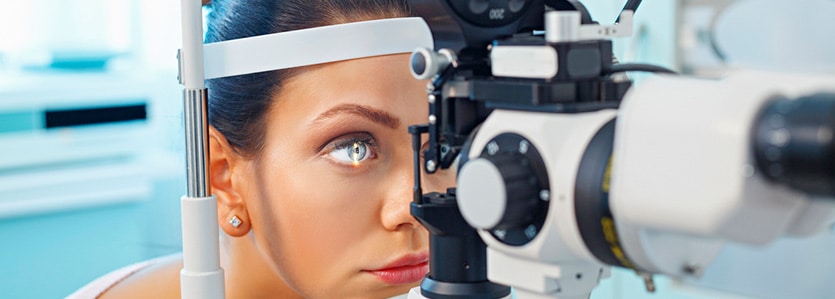
Cataracts
A cataract is a common condition that causes a clouding of the eye’s natural lens, and affects millions of people each year, including more than half of all Americans over the age of 65. Cloudiness develops as a result of a buildup of protein in the lens.
Comprehensive Eyecare
Routine eye exams are absolutely essential in not only maintaining clear vision but to also protect the health of your eyes. Eye examinations give an opportunity to detect and inform you about eye disorders such as glaucoma, cataracts, and diabetic retinothapy, as well as report on general health conditions such as diabetes and high blood pressure. To allow proper treatment, early detection of eye conditions is critical.
Contact Lens Fitting
Thanks to advances in optical technology, almost everyone can now wear contact lenses, regardless of the type or extent of their vision problems. Unlike glasses, contact lenses move with your eyes so you can enjoy a larger field of vision with fewer distortions.
Corneal Diseases
Fuchs Endothelial Corneal Dystrophy, Herpes Eye Diseases, Ptergium, Conjunctival Growths, Corneal Ulcers, Corneal Abrasions, Corneal Foreign Bodies, Corneal, Recurrent Erosion and Blepharitis are all Corneal Diseases.
Diabetic Eye Care
Patients with diabetes are at an increased risk of developing eye diseases that can lead to vision loss and blindness, such as diabetic retinopathy, cataracts and glaucoma. In fact, diabetes is actually the leading cause of blindness in the United States.
Dry Eye
Dry eye occurs when the eyes aren’t sufficiently moisturized, leading to itching, redness and pain from dry spots on the surface of the eye. The eyes may become dry and irritated because the tear ducts don’t produce enough tears, or because the tears themselves have a chemical imbalance.
Eyeglass Prescriptions
Over 140 million people in the U.S. wear eyeglasses, which effectively correct vision by adjusting the way the eyes bend and focus light. Ideally, light rays are refracted (bent) as they pass through the cornea so that they focus on the retina in the back of the eye.
Glaucoma
Glaucoma is the leading cause of blindness and visual impairment in the US, and can affect patients of all ages, many of who do not experience any symptoms and may not be aware that they have the disease.
Macular Degeneration Evaluation
Macular degeneration, also known as age-related macular degeneration (AMD) is a common condition in older adults and the leading cause of vision loss and blindness in people over the age of 65.
Minor Eye Surgery
Although most eye conditions can be treated through medication and other nonsurgical approaches, some more severe or complex cases may require surgery to restore eye health and reduce the risk of complications.
Premium Cataract Surgery
Premium Cataract Surgery can offer substantial benefits as compared to standard cataract surgery. While standard cataract surgery is extremely safe and effective, the laser technology used in premium cataract surgery allows for greater precision while minimizing post-operative healing time. Also available are premium intraocular lenses (IOLs) which replace the natural lenses of the eyes and can restore excellent vision at a range of distances and could even eliminate the need for glasses and contact lenses.
Routine Eye Exams
Regular eye exams are an invaluable tool in maintaining eye health by detecting and preventing disease. Some diseases, such as glaucoma, develop gradually without causing pain or vision loss, so patients may not notice that anything is wrong until significant and irreversible damage has been done.

